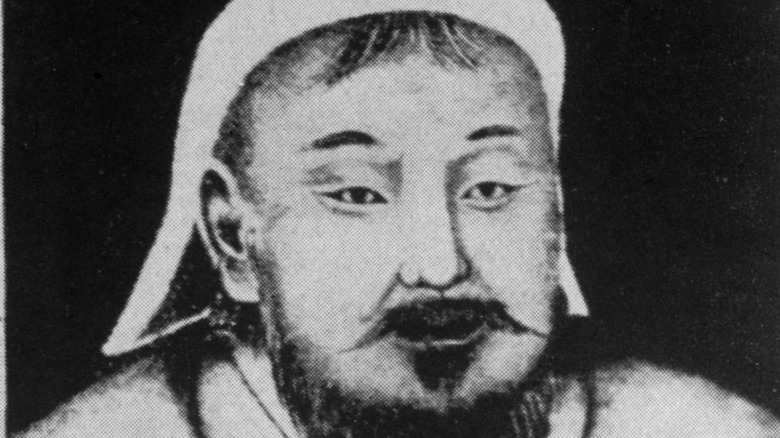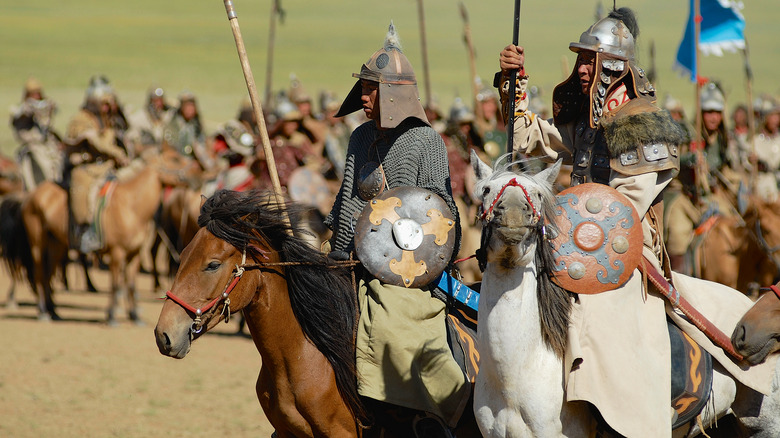The Truth About Genghis Khan's Childhood
One of the most feared sovereigns in world history, Genghis Khan emerged from the obscure plains of northwestern Asia to conquer most of Asia, including China and much of Persia. It was the basis of a Mongol Empire that would someday stretch from Korea to Poland and Egypt, the greatest land empire in history. As an emperor — sometimes brutal, sometimes benevolent — the great warrior fathered so many children that today, some 16 million men around the world can claim him as an ancestor.
So it may be surprising to know that Genghis Khan started with almost nothing, an orphan in an isolated part of the world, with far more enemies than friends. He was born around 1160 near Lake Baikal, in what today is the Russian side of the Russian-Mongolian border. His father, chieftain of a minor Mongol clan, was poisoned by a rival clan of ethnic Tatars (via History). One of the slain chief's Mongol rivals quickly took his place, and forced his widow, along with the infant future conqueror, to live in exile, fending for themselves on the lonely steppe.
His name was Temujin
Genghis Khan had yet to acquire the name that would terrify half the world. "Genghis Khan" means, literally, "oceanic (i.e. universal) chief" (per Britannica). His actual name was Temujin, a humble name derived from the word for iron, and which may have implied an expected future career in blacksmithing. But there would be no such tranquil vocation for the young Temujin, forced to fish or scrounge through the plants of the high steppe for food. (Mongols favored meat and mare's milk, so the pescatarian diet would have been an additional humiliation.)
According to the book known as the 13th-century "Secret History of the Mongols" (posted at Mongolian Culture), Temujin's willpower proved stronger than the deprivations of his exile. First, with all the brutality that would earn him his fearsome reputation, the teenage Temujin and his younger brother murdered their older brother, securing Temujin's place as head of the family. Later captured by the same tribesmen who ousted his family, Temujin escaped and began to attract a host of followers, who had no reason to join the young warrior other than his irresistible charisma. When he approached Toghril, leader of another Mongol tribe, to strike an alliance, Temujin had nothing to offer but a single sable skin, according to Britannica. Toghril accepted the fur and gave Temujin command of over 20,000 horsemen. His mythic status was confirmed, and by 1206 the Mongol tribes would confer on him a new name: Genghis Khan, ruler of the world.

